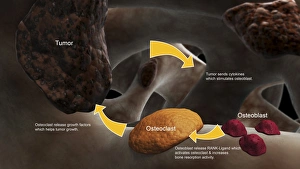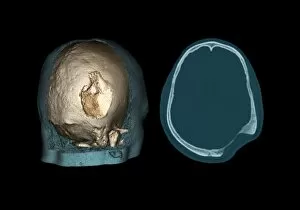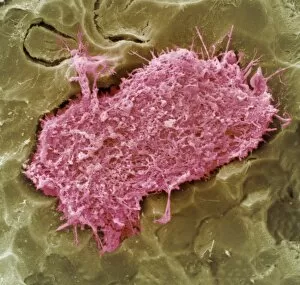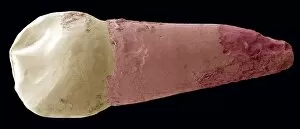Resorption Collection
Resorption, a fascinating process in the world of osteology, involves the remarkable ability of osteoclasts to break down bone tissue
All Professionally Made to Order for Quick Shipping
Resorption, a fascinating process in the world of osteology, involves the remarkable ability of osteoclasts to break down bone tissue. These specialized cells play a crucial role in maintaining skeletal health by removing old or damaged bone and allowing for new growth. Imagine a conceptual image illustrating the intricate process of bone metastasis, where osteoclasts tirelessly work to break down bone tissue affected by cancerous cells. This visual representation highlights the complexity and importance in understanding diseases like Gorham's disease. Gorham's disease, captured through 3D CT scans, showcases how this rare condition leads to progressive bone resorption. The images reveal the extent to which bones can be affected, emphasizing the need for further research and treatment options. Zooming in on tooth resorption cell under scanning electron microscopy (SEM), we witness its unique structure responsible for breaking down dental tissues. SEM also unveils milk teeth undergoing natural resorption as they make way for permanent ones - an incredible phenomenon that occurs during childhood development. Delving deeper into SEM imagery, we observe a human canine milk tooth undergoing resorption. This microscopic view allows us to appreciate nature's meticulous design as it facilitates healthy oral development. Bone resorption is not just limited to specific conditions; it is an essential part of our body's continuous remodeling process. Osteoclasts diligently remove old or damaged bone tissue while paving the way for fresh growth and rejuvenation. Resorption serves as a captivating reminder of our body's intricate mechanisms at work. From osteoclasts breaking down bone tissue during diseases like Gorham's disease to tooth resorption during childhood development - these glimpses into cellular processes shed light on both normal physiological functions and pathological conditions within our skeletal system.










